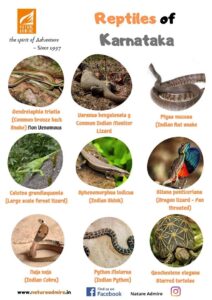
91 8618751811
natureadmireblr@gmail.com
0
- Home
- Summer children camp 2024
- Destinations
- Library
- Do’s and don’ts
- Do’s and don’t’s for wildlife tours
- Do’s and don’t’s for Wildlife photography and Safari tours
- Do’s & Don’t’s for bird watching (Ornithology)
- Do’s and don’t’s for trekking
- Do’s and don’t’s for travelers
- Do’s & don’t’s for Mountaineering
- Do’s and don’t’s for Pilgrimage tours
- Do’s and Don’t’s for Rock climbing
- Do’s and Dont’s ~ Road trips / Long drives / Caravan tours
- Do’s and Don’t’s for Kayaking & Rafting
- Guide to travel safely
- Learn by posters
- Adventure
- Camping styles ~ Tent, Glamping, RV, Car, Hammock, Backpacking
- A guide to the first aid kit for backpackers and travellers
- Navigation ~ Map reading & GPS use in the outdoors
- Climbing knots – Essential for rock climbing, mountaineering, trekking
- Rock climbing techniques for beginners
- Kayaking ~ A gateway to adventure
- Cooking style in the Outdoor & wilderness
- wildlife & birds
- Endemic species of India
- 7 spectacular butterflies of India
- Endemic birds of the Western Ghats
- Coral reef wonders in the Arabian Sea
- Butterflies of the Western Ghats
- Birds and their Amazing Beaks and Feet
- Endemic species of fishes in the Western Ghats
- Nocturnal Mammals of the Western Ghats
- Wild orchids species of the Western Ghats – Karnataka, Kerala, Maharasthra, and Goa
- Mammal tracking – the art of identifying animals by the signs they leave behind in the forest
- Reptiles in the Western Ghats (Karnataka, Kerala, Maharasthra and Goa)
- Exploration
- Adventure
- Do’s and don’ts
- Work with us
- About Us

